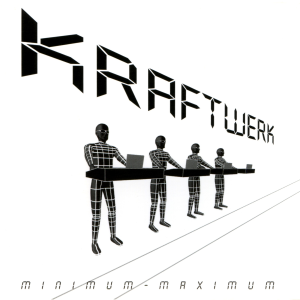I need some help finding a distro for a very old machine.
It's my family's old desktop with 2001 components (bought in 2004) and a Pentium CPU that is NOT i686. I checked the exact model and architecture once but I don't remember it now. The only thing I remember is that it's not i686 so 99% of modern 32 bit distros don't work on it (stuck right after grub).
The machine has 1 Gb of DDR1 RAM though so I think it may be useful or at least fun to play around with.
Now it's on Windows XP that runs quite well but doesn't support modern SSL certificates so it can't browse the internet (idk how to fix it ok?).
A long time ago I tried to run multiple distros in live mode on it and got only one (Puppy) to work. Display, sound, ethernet and pretty much everything worked fine. GPU seemed to be an issue though because NVidia and I couldn't install the driver (it was skill issue and I think it's possible to do). But now it doesn't work for some reason.
Are there any Linux distros or other operating systems (preferably not deprecated) that I can install on it? And btw it does have bootable USB support.
EDIT: There are way too many answers and a lot of ones that don't mind the architecture limitations. I'm grateful to everyone who replied but I have to close this discussion now and I will not reply to further answers. I have received enough information and I cannot physically read so many replies.
There’s gentoo options for a lot of older architectures. I even got it running on a 32bit power machine.
Back in the day gentoo meant compiling everything from source, but nowadays there’s precompiled binaries.
If you’re doing the evanescence routine on older hardware, check to see if there’s cheap ram and ssds available that work with its interfaces. Usually the trick with pata is to use old cf to sata adapters because cf is pin compatible with the little pata interfaces they’d put on laptops.
Consider cleaning and reapplying thermal paste to the cpu. You won’t even need to take it out of the socket, just don’t dump isopropyl all over the board while cleaning.
If your old computer has a cool old sound card there’s never been a better time to use a tracker that takes advantage of its built in synthesizer!
doing the evanescence routine on older hardware
That was one of the best deep-cut comments I have read in a while! The helpful advise to OP was also nice. lol
Are you sure it's not a 686? Because apparently the Pentium Pro from 1995 is already a 686, by 2001 the Pentium 4 was already out.
I'm still skeptical. At the time of the original Pentium (the last 586 from Intel, the fastest of which was 300 MHz), the usual amount of RAM was something like 16 or 32 MB. A 586 with 1 GB of RAM is extremely weird and probably impossible unless it's some sort of high-end server. This does not check out.
Oh and DDR is also from around the time of the Pentium 4. I don't think there exists a machine that has both DDR and an original Pentium (aka 586). Again, this does not check out and is probably impossible.
There could be another reason it won't boot.
We really need to see info from the BIOS --- exact CPU model, RAM speed, etc.
As others have pointed out, this is a pretty anachronistic build --- i586 with DDR1 is just weird, so it's possible there's some really niche hardware and you may need an exotic kernel (or kernel options) to get anything to boot.
That said: have you just tried running a standard live or install CD from that time period? You could try booting a 2001 Slackware installer to see what happens.
A long time ago I tried to run multiple distros in live mode on it and got only one (Puppy) to work. Display, sound, ethernet and pretty much everything worked fine. GPU seemed to be an issue though because NVidia and I couldn’t install the driver (it was skill issue and I think it’s possible to do). But now it doesn’t work for some reason.
Puppy linux has 3 versions, based on different distros. Maybe you tried one version back then, and now a different one?
Is a cheap ARM SBC an option? You'd save like $80 per year just on power consumption, and could run a modern kernel.
Consider antiX. It's very lightweight, supports 32 bit and you'll have access to the Debian Repos.
I found this in the wastelands of Google: https://www.howtogeek.com/linux-distributions-to-breathe-new-life-into-old-hardware/
I read the guide and it seems pretty solid.
If it is not x86 is it the Itanium ISA?
Damn Small Linux is a recently resurrected distro made specifically to run on old 32-bit PCs. You probably won't be doing much web browsing or gaming on this device, but you should at least be able to get it to function
Can you post the CPU info? I think it should be available from the BIOS.
Dunno if it would work or not, but I wonder if a minimal NixOS install would work.
I think it's easier to write your own kernel from scratch than learning how to install something in Nix lol
It's not that bad 😆. But there's definitely a learning curve, something I'm working on figuring out myself, at the moment. There's some practice guides, but it's certainly a unique beast.



